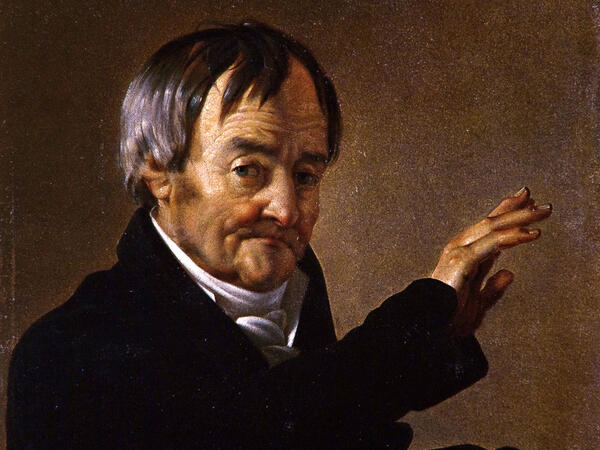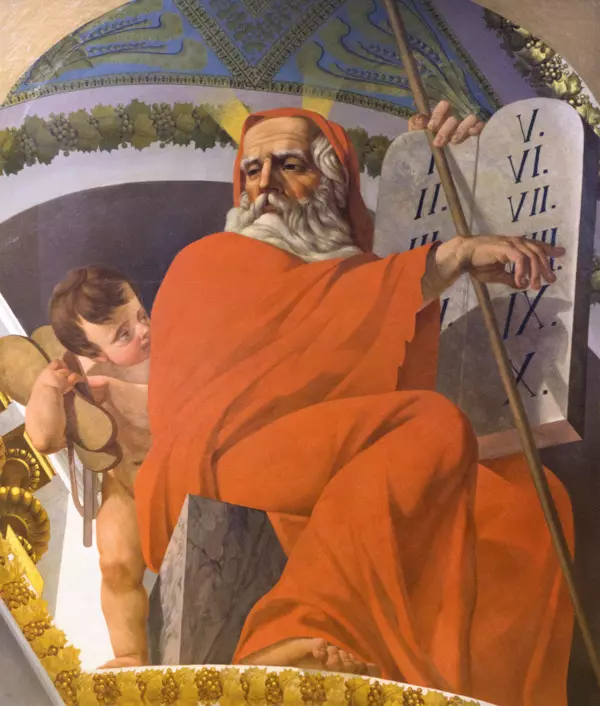Vasily Shebuyev was a Russian artist at the turn of the 18th and 19th centuries. Shebuyev’s life is inextricably connected with the Academy of Arts. There, he studied, after which he taught classes, and then became the head of the painting department. He was admitted to the Academy when being only five years old.
The composition was considered the most important subject in the system of academic education at that time. A student had to be able to place characters on the canvas in various positions and complex angles. Moreover, he had to do that only with the help of his imagination without any models. The highest academic awards were awarded for composition: minor and major, silver and gold medals, which gave the right to travel abroad at the state’s expense. Vasily Shebuyev perfectly mastered the art of composition, and his student paintings were often used as exemplary in the class. The academic success of the young Shebuyev was proved by the examination lists for the years 1785–1799, preserved in the archives.
Along with his teachers, Shebuyev worked on a portrait of the Russian ruler Paul I, for which the emperor presented him with a gold snuffbox. After the graduation, the young artist, recognized as the most diligent student, was invited to stay to teach at the Academy, and in 1803, he was sent to Rome to improve his technique. Three years later, Shebuyev was recalled to Russia to paint the Kazan Cathedral, which at that time was being built in St. Petersburg. The artist created several compositions there, including images of three saints — Basil the Great, Gregory the Theologian and John Chrysostom.
In 1821, Vasily Shebuyev painted the ceiling of the Church of the Resurrection in Tsarskoye Selo. Emperor Alexander I liked his work so much that he appointed the artist ‘His Imperial Majesty’s artist’ and a curator of the Hermitage museum treasures.
Moreover, Shebuyev painted portraits. The permanent exhibition of the Chelyabinsk State Museum of Fine Arts displays “Portrait of a Retired Freight Forwarder at the Imperial Orphanages I. V. Shvykin”. The artist was impressed by the expressive face of the seventy-year-old retired official Ivan Shvykin persuading the old man to pose for him and then gifted him this painting.
The canvas is characterized by a realistic manner of painting, monochrome coloring with a predominance of black, olive-gray and brown tones and a shallow depth of space. For a long time, the portrait, due to the characteristic gesture of the hero, was presented under the title “Chorister Shvykin”. The choir director of the church choir was called the chorister.
The composition was considered the most important subject in the system of academic education at that time. A student had to be able to place characters on the canvas in various positions and complex angles. Moreover, he had to do that only with the help of his imagination without any models. The highest academic awards were awarded for composition: minor and major, silver and gold medals, which gave the right to travel abroad at the state’s expense. Vasily Shebuyev perfectly mastered the art of composition, and his student paintings were often used as exemplary in the class. The academic success of the young Shebuyev was proved by the examination lists for the years 1785–1799, preserved in the archives.
Along with his teachers, Shebuyev worked on a portrait of the Russian ruler Paul I, for which the emperor presented him with a gold snuffbox. After the graduation, the young artist, recognized as the most diligent student, was invited to stay to teach at the Academy, and in 1803, he was sent to Rome to improve his technique. Three years later, Shebuyev was recalled to Russia to paint the Kazan Cathedral, which at that time was being built in St. Petersburg. The artist created several compositions there, including images of three saints — Basil the Great, Gregory the Theologian and John Chrysostom.
In 1821, Vasily Shebuyev painted the ceiling of the Church of the Resurrection in Tsarskoye Selo. Emperor Alexander I liked his work so much that he appointed the artist ‘His Imperial Majesty’s artist’ and a curator of the Hermitage museum treasures.
Moreover, Shebuyev painted portraits. The permanent exhibition of the Chelyabinsk State Museum of Fine Arts displays “Portrait of a Retired Freight Forwarder at the Imperial Orphanages I. V. Shvykin”. The artist was impressed by the expressive face of the seventy-year-old retired official Ivan Shvykin persuading the old man to pose for him and then gifted him this painting.
The canvas is characterized by a realistic manner of painting, monochrome coloring with a predominance of black, olive-gray and brown tones and a shallow depth of space. For a long time, the portrait, due to the characteristic gesture of the hero, was presented under the title “Chorister Shvykin”. The choir director of the church choir was called the chorister.




